Oxford University Press's Blog, page 422
January 4, 2017
The APA Eastern 2017: a conference guide
The Oxford Philosophy team is excited to see you in Baltimore for the upcoming 2017 American Philosophical Association Eastern Division Meeting! We have some suggestions on sights to see during your time in Maryland, as well as our favorite sessions to attend at the conference.
Baltimore is a great place for those who enjoy American history. Take a stroll along Baltimore’s Inner Harbor, where visitors can tour numerous historic ships, such as the USS Constellation, USS Torsk, and the Lightship Chesapeake. Visit the Frederick Douglass-Isaac Myers Maritime Park, a shipyard museum with exhibits honoring African-American maritime history. History buffs may also be interested in a visit to coastal Fort McHenry, known for its defense of Baltimore Harbor in the War of 1812.
Browse contemporary and modern art works at the Baltimore Museum of Art, or stop in for a tour of the Edgar Allan Poe House and Museum. Baltimore’s National Aquarium is home to over 17,000 creatures, including sharks, rays, dolphins, and tropical fish.
Be sure to keep an eye out for these conference sessions that we’re excited about:
Wednesday, January 4th 11 AM—3 PM Sessions:
Colloquium: Meta-metaphysics featuring Amie Thomasson.
International Society for Buddhist Philosophy discusses Suffering, Anger, and No-Self: Buddhist–Western Comparative Perspectives, featuring Bryce Huebner, Tadeusz Zawidzki, Eyal Avivm, and Emily McRae.
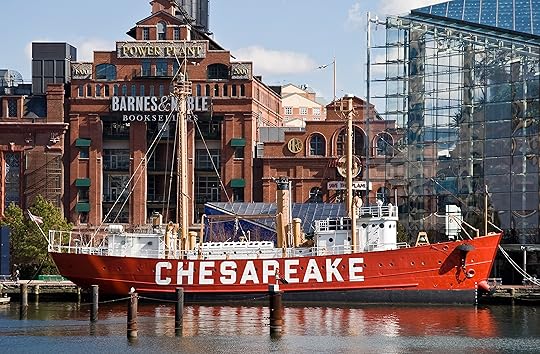 Lightship Chesapeake (LV-116) in the Baltimore Inner Harbor, with the Power Plant and National Aquarium at Baltimore behind. Photo by Acroterion. CC-BY-SA 3.0 via Wikimedia Commons
Lightship Chesapeake (LV-116) in the Baltimore Inner Harbor, with the Power Plant and National Aquarium at Baltimore behind. Photo by Acroterion. CC-BY-SA 3.0 via Wikimedia CommonsInternational Association of Japanese Philosophy discusses Environmental Philosophy and Japanese Philosophy, featuring James McRae, Leah Kalmanson, Yu Inutsuka, Steve Bein, and John Krummel.
Wednesday, January 4th 3 PM—6 PM Sessions:
Author Meets Critics: David Bronstein, Aristotle on Knowledge and Learning: The Posterior Analytics.
Thursday, January 5th 9 AM—Noon Sessions:
Invited Symposium: The Passions in Early Modern Philosophy featuring Lisa Shapiro, Deborah Brown, and Elizabeth Radcliffe.
APA Committee Session: Women of Color Feminism featuring Naomi Zack, Joy James, Tommy J. Curry, and Celena Simpson.
Society for Applied Philosophy discusses The Human Right to Health, featuring S. Matthew Liao, Nir Eyal, and Nicole Hassoun.
The Journal of Chinese Philosophy: Special Session on Time and Space: Roots of Humanity, featuring Edward S. Casey, Robert C. Neville, Steven Heine, Lauren F. Pfister, and Chung-Ying Cheng.
Thursday, January 5th 2 PM—5 PM Sessions:
Invited Symposium: Philosophy in the Anthropocene: Pessimism, Optimism, Hope, Despair featuring Byron Williston, Joshua Foa Dienstag, and Adrienne Martin.
Author Meets Critics: Carolina Sartorio, Causation and Free Will.
Association of Chinese Philosophers in North America (ACPA) featuring David Wong, with commentary by Nancy Snow, Christian Miller, and Bongrae Seok.
Thursday, January 5th 5:15 PM—10:30 PM Sessions:
Authors Meet Critics: The Perfectionist Turn: From Metanorms to Metaethics by Doug Rasmussen and Doug Den Uyl.
North American Kant Society discusses Kant on Terrorism, featuring Rebecca Gordon, Olivia Custer, and Efraín Lazos.
APA Committee Session: Ethical Issues in ‘Wanted’ Pregnancies: Maternal Rights, Duties, and Prerogatives, chaired by David Wasserman and featuring Margaret Little, Anne Lyerly, and Rebecca Kukla.
Friday, January 6th 9 AM—11 AM Sessions:
Steve Cahn and Oxford University Press’s Robert Miller Discuss Their 20-Year Collaboration on Seventeen Philosophy Texts.
International Berkeley Society Group Discussion featuring Samuel Rickless, Jennifer Smalligan Marušić, and S. Seth Bordner.
Society for Philosophy and Disability discusses Respecting People with Disabilities in Public and Private Life, featuring Adam Cureton, Alice Crary, and John Vorhaus.
Friday, January 6th 11:15 AM—1:15 PM Sessions:
APA Committee Session: Women Do History of Philosophy—Recent Scholarship, chaired by Lisa Shapiro and featuring Agnes Callard, Marta Jimenez, Chris Meyns, and Jessica Gordon-Roth.
Friday, January 6th 1:30 PM—4:30 PM Sessions:
Invited Symposium: Content, Attitudes, and Attitude Ascriptions featuring Stephen Yablo and Seth Yalcin.
Author Meets Critics: Tim Lewens, Cultural Evolution: Conceptual Challenges.
Invited Symposium: The Medicalization and Politicization of Fat featuring Samantha Brennan, Megan Dean, and Anne Barnhill.
Author Meets Critics: Elizabeth Barnes, The Minority Body.
Friday, January 6th 7 PM—10 PM Sessions:
Society for Realist/Antirealist Discussion discusses Metaphysics of Science, featuring Steven French, Kerry McKenzie, and Otavio Bueno.
Saturday, January 7th 9 AM—11 AM Sessions:
Symposium: What Are Sensory Powers? Chaired by Gualtiero Piccinini and featuring Todd Ganson.
Saturday, January 7th 1:30 PM—4:30 PM Sessions:
Author Meets Critics: Imogen Dickie, Fixing Reference.
Author Meets Critics: Wolfgang Spohn, The Laws of Belief.
Take time to visit the Oxford University Press Booth! Browse new and featured books which will include an exclusive conference discount. Pick up complimentary copies of our philosophy journals which include Mind, Monist, Philosophical Quarterly, Analysis, and more! Receive free access to our online resources including Oxford Handbooks Online, Very Short Introductions, Oxford Reference, and more. And, of course, stop by to say hi!
Featured image: A four segment panorama of Baltimore’s Inner Harbor skyline taken at night from Federal Hill. Photo by Joe Ravi. CC-BY-SA 3.0 via Wikimedia Commons.
The post The APA Eastern 2017: a conference guide appeared first on OUPblog.

In one’s cups, or: good wine needs no bush
A Happy New Year! It has arrived, in full accordance with The Oxford Etymologist’s bold promise. Once upon a time, the ability to see into the future was called second sight (clairvoyance is too bookish). Despite the success of my prediction, this blog is sadly divorced from everyday life: it exists sub specie aeternitatis, that is, under the aspect of eternity, and deals with things independent of current events. A typical language column is a tuning fork. For example, some very important person gives a speech and calls his opponent, reproachfully or admiringly, brash. On the next day, at least fifteen journalists fall over the great man’s word chest and discuss the origin of this not too common adjective, while I plod along, making my way through curses and blessings, clover and clod, borrowed cats and onomatopoeic dogs, oblivious to (I grew up saying oblivious of) the tumult of everyday life. No, no one whom I know has recently used brash in a political statement: it just happens to be the word I hope to discuss in the nearest future. The public, I believe, should be informed about such plans well in advance. But it occurred to me that perhaps some of our readers drank champagne while seeing in the New Year, and therefore I decided to devote the first post of 2017 to good wine.
As early as 1873, Walter W. Skeat wrote authoritatively (as was his wont) that bush in the saying good wine needs no bush “is well known to be that which was tied to the end of an ale-stake.” Perhaps so (though we will see that what is well-known may not be indubitable), but there was a Latin proverb sounding suspiciously like its English analog: “Vino vendibilis suspensa hedera [“ivy”] non (or nihil) opus est.” As Shakespeare’s Taverner explains at the close of As You Like It: “Wine that is saleable and good needeth no bushe or garland of yvie to be hanged before.” This aphorism, in the Latin form cited above, has been attributed to Erasmus. In any case, it is “modern” and apparently had no currency in England before Shakespeare’s or at least Camden’s time.
Ivy was the plant sacred to Bacchus, so that its association with wine is natural. Taverner understood the proverb as we do: good merchandise needs no advertising, for its quality speaks for itself (with the implication: “A good play needs no epilog”). The indispensable E. Cobham Brewer (what a name in this context!), the author of Dictionary of Word and Fable (1898), retold in detail what he had found about the custom. Those who still use his first edition should beware of taking his explanations for the ultimate truth, but in this case modern sources add nothing new.
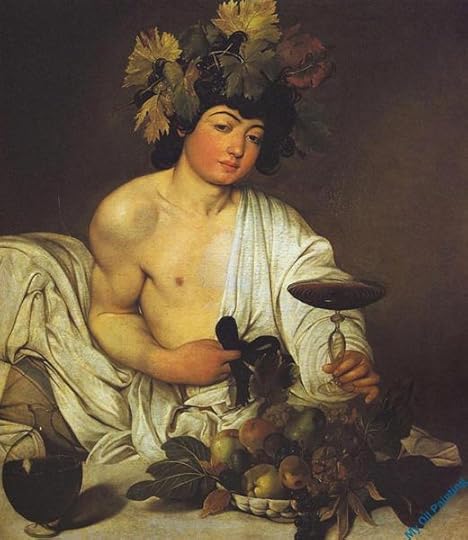 Bacchus and his plant: the poison and its antidote.
Bacchus and his plant: the poison and its antidote.The literature on the idiom that interests us here devotes some space to ale poles, and I will quote part of what I have read, but one thing remains undisputed: the Latin adage mentions ivy, while the English version does not. The French equivalent is closer to Latin (lierre is again “ivy”): “Au vin qui se vend bien, il ne faut point de lierre.” I also see a certain contradiction: why did every tavern display the sign if the quality of its wine was assured? An author stated in 1888 that there was scarcely a town in England without its “Bush Inn.” It is as though some link between the Latin saying and the English custom is missing. The same author also suggested that Engl. busky “drunk” has its origin in the association between wine and bush. Busky, or its better-known variant bosky, does mean “tipsy,” but its connection with bushes is somewhat uncertain. In any case, the suggestion given above is not worse than any other.
I would like to refer to a note by R. R. Sharpe in Athenæum/2 for 1888, p. 260. In a document going back to 1350, he found evidence that it had been customary to place a bunch or bush of rosemary or other herb in a drinking vessel, either to give a particular flavor to the beverage or, as he remarked, to disguise the inferior quality of the wine. “Of bush in this sense it is clear that good wine stands in no need.” Sharpe’s conjecture sounds convincing (and, if so, the traditional reference to the pole is the product of folk etymology). It also strengthens the etymology of busky ~ bosky, offered above, though very much depends on when this slang word turned up; with such popular coinages one never knows. The OED has a relatively late attestation, but this is not surprising.
According to a widespread belief, ivy (or rather its berries) was a preventive of drunkenness. Pliny and Cato thought so, and old English herbalists shared their opinion. Regardless of whether this belief has foundation in fact, with it several things come together. Very early, people discovered that an antidote should contain the same elements as the poison. Their discovery makes no sense only when it is carried to an absurd extreme. Probably everybody knows the phrase a hair of the dog that bit you. Nowadays, it occurs when one drinks something to cure the hangover, very often the stuff that caused the intoxication. But in the past it was widely held that, if someone was bitten by a dog infected with rabies, a hair of that dog prepared in a certain way could provide an antidote.
Like cures like. Myths tell us that a supernatural creature could be killed with no weapon except its own. The great hero Beowulf kills Grendel and then descends to the bottom of the sea to fight Grendel’s mother. He has a wonderful sword, but it fails. However, when he attacks his enemy with a sword hanging on the wall of the cave, he kills Grendel’s “dame.” In similar fashion, I think the mistletoe was the only plant that could turn into a spear and kill the shining Scandinavian god Baldr because at one time it was probably dedicated to him. Bacchus (or Dionysius) was a god of inebriation (inebriation meant being closer to the forces that control our destiny). It is then natural that his plant was ivy, a powerful antidote.
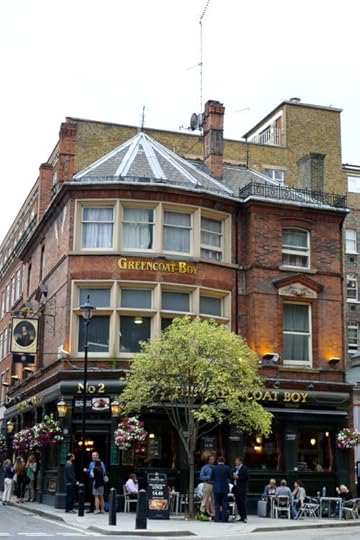 A British tavern. No bush, no ale-post, but at least something green.
A British tavern. No bush, no ale-post, but at least something green.Now back to ale stakes. I am again paraphrasing Sharpe. At one time, ale stakes became such a nuisance, projecting in front of taverns and so far over the king’s highway as to impede riders’ progress. Moreover, by reason of their excessive weight they tended to the deterioration of the houses in which they were placed. An ordinance was made prohibiting anyone having such an ale stake or leaves over the king’s highway more than seven feet in length at the utmost, on pain of being fined. Everything, we conclude, is good in moderation.
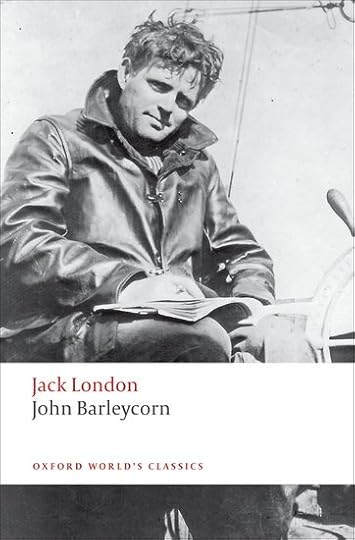 John Barleycorn got up again.
John Barleycorn got up again.Much to my regret, today’s young Americans rarely read Jack London. Some schools still recommend The Call of the Wild, not his best book. His short stories, which can be found at any good library, enjoy almost no popularity. But since this post is about drinking, may I suggest to those who have not read his book John Barleycorn to do so? It is an engrossing autobiographical novel by a non-anonymous alcoholic.
Images: (1) “Bacchus” by Caravaggio, Public Domain via Wikiart. (2) “Greencoat Boy, Westminster, SW1” by Ewan Munro, CC BY-SA 2.0 via Flickr. Featured image: Ivy by Didgeman, Public Domain via Pixabay.
The post In one’s cups, or: good wine needs no bush appeared first on OUPblog.

The continued relevance of sport diplomacy
As Heather Dichter pointed out in her 2014 H-Diplo essay, a conundrum of sport diplomacy, perhaps its signal paradox, is the extent to which nations have used sport as a proving ground on the world stage. But these “mega-events” that nations require to prove their superiority also necessitate international cooperation. The field has made significant strides in the nearly two years since Dichter evaluated it, and the essays published in this forum reflect the discipline’s growth as well as avenues for further inquiry. Current American and global politics and their illumination on the playing field demonstrate the extent to which actors within and sometimes without a country deepen understanding of how politics and sport work in the international arena.
Just this year, athletes have made clear how complex, and yet how exciting, it will be to study the history of sport and international relations of the post-9/11 era. The recent Rio Olympiad, for example, featured fascinating tensions between health personnel, pregnant women, the Brazil National Olympic Committee (NOC), the Brazilian government, and the International Olympic Committee (IOC) over visitors’ potential exposure to Zika. In addition to a health crisis that particularly affects women and unborn children, in the context of an event that sometimes sees pregnant athletes compete (as when American Kerri Walsh Jennings took gold in beach volleyball five weeks pregnant in 2012), Brazilian administrators and Rio officials faced controversy over whether they would be ready for the Games in a throwback to the 1968 fears of a “mañana” mentality that the first developing nation Games saw in Mexico City. Outsiders also worried about violent crime in Rio, a fear American swimmer Ryan Lochte and his teammates seemingly confirmed when they reported being robbed after winning gold medals. When their story fell apart, however, it highlighted the question of how athletes’ entitlement at home can embarrass a nation abroad.
The fielding of a Refugee Olympic Team (ROT), in contrast, allowed athletes from war-torn nations to compete, challenging the IOC’s own foundational basis in discrete nations’ participation. That said, the face the IOC chose to publicize the team, that of Yusra Mardini, was beautiful, and backed by a heartrending, selfless story; originally from Syria, Mardini had escaped to Germany in 2015, and had (with other swimmers) towed her rescue boat from Turkey to Greece en route. American corporation Visa sponsored the athletes and featured Mardini in a prominent advertisement, “The Swim,” it ran during the Games, juxtaposing images of her in the pool and pulling a simulated refugee dingy, with her voiceover. “When the engine died that night,” she intoned, “I told myself not to give up, to give everything. I did then, and I will now.” The ad pointed up the role of corporate actors on the international sport stage in such fraught moments as the Syrian Civil War, and used a woman to do so.
In the United States, the post-Olympic connection of sport to racial and electoral politics continues to highlight domestic tensions that may well extend abroad. As San Francisco 49ers QB Colin Kaepernick remains in the news, he draws on calls for racial agency and manhood that have extended abroad for more than a century – in, for example, the footsteps of Progressive Era-boxer Jack Johnson; the sixties protests of stars Muhammad Ali, John Carlos, and Tommie Smith; and the 1990s refusal to rise of NBA star Mahmoud Abdul-Rauf – in demanding that the United States live up to its democratic creed in its expectation of athletes to perform in elite competition on the world stage. Kaepernick’s compromise of “taking a knee” after discussion with former U.S. Army Green Beret Nate Boyer points up the continued connection of the U.S. military to sport and Americans’ own perception of its military presence abroad as being naturally, organically bound to men’s sport.
Meanwhile, U.S. president-elect Donald Trump’s mockery of a disabled reporter on the campaign trail and controversial history toward women, communities of color, and immigrants should, perhaps, ask academics to observe with interest how his administration might approach sport as a vehicle for foreign policy. President Obama, a sport enthusiast and man whose heritage extends across continents, has made use of his love for basketball – a connection begun with his Kenyan father’s parting gift of a ball in the 1960s – to connect with Americans, and Donald Trump may, as seems his wont, continue to operate in unconventional ways at home and abroad which might use sport. His recent conversation with Taiwan, which has irked the Chinese, should remind us that the incoming administration will perhaps need the kind of informal diplomatic connections through culture – of which sport is a principal one – to navigate the currents abroad he wishes to challenge. Furthermore, how will communities at home and abroad that face potential restrictions – those seeking asylum or naturalization, for example, or disabled people – respond to Trump’s rhetoric and policy? Sport may prove, across the world, a visible means of dramatic response. As a disabled athlete and scholar, I wonder about these questions from an insider-outsider perspective. Whatever the future holds, the importance of the history and present of sport diplomacy seems more relevant than ever before.
Featured image credit: Tower Bridge by ahnssoni. CC0 Public Domain via Pixabay.
The post The continued relevance of sport diplomacy appeared first on OUPblog.

Globalization’s prospects, 2017
2016 was a rough year for globalization. And 2017 may get even rougher.
By globalization, I mean the growing interconnectedness between economies through cross-border flows of goods and services, money, and people.
The world has undergone two “eras of globalization” during the past century and a half. The first occurred during the 40 years or so before World War I. For most of the 19th century, countries maintained high tariffs (import taxes) in order to protect their domestic economies from foreign competition. In 1846 Britain, faced with millions of starving people in famine-ravaged Ireland, unilaterally repealed tariffs on imported grain. The rest of the industrialized world soon followed by lowering tariff rates (see Figure 1). Concurrently, the spread of the gold standard made it easier to transact business across national borders, since the money that was being sent was not really francs, marks, or pounds sterling, but their equivalent in gold.
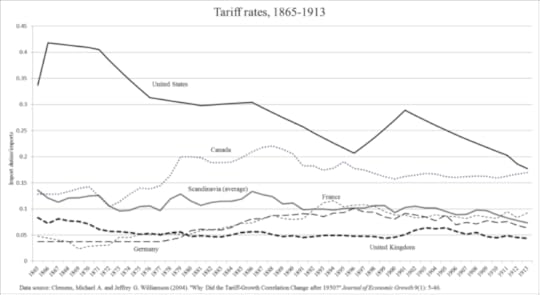 Tariff rates 1865-1913 by Richard Grossman. Used with permission.
Tariff rates 1865-1913 by Richard Grossman. Used with permission.World War I was bad for globalization. Countries at war prefer to destroy their enemies’ goods than to trade for them. Typically, countries at war try to make themselves as self-sufficient as possible in consumer goods and war materiel. The war also led to the demise of the gold standard, reducing the ease with which money could cross borders.
If World War I wounded globalization, the Great Depression killed it. Countries in recession demand fewer goods and services than those that are prospering, and hence trade less. Further, the decline in economic activity led countries to try to increase demand for domestic goods by increasing tariffs on imports (see Figure 2). And, despite several attempts, the pre-war gold standard was never successfully resuscitated.
 Tariff rates 1914-1939 by Richard Grossman. Used with Permission.
Tariff rates 1914-1939 by Richard Grossman. Used with Permission.Following World War II, the leading industrialized countries tried to resurrect the pre-World War I trading system based on fixed exchange rates and lower tariffs. Fixed exchange rates were reestablished, although they only lasted until the 1970s. The General Agreement on Tariffs and Trade (GATT), established in 1948 with the goal of reducing tariffs across the board on a multilateral basis, has been more durable. From its establishment until recently, tariff levels have fallen and trade has expanded. In addition to the GATT (and its successor, the World Trade Organization), regional trade pacts—such as the European Union and North American Free Trade Agreement, have lowered trade barriers even further and promoted cross-border trade. These developments have been welcomed by economists, who believe with near unanimity that trade liberalization improves aggregate economic welfare, while recognizing that not all sectors of the economy and workforce benefit from it.
And then the Great Recession hit. Like the Great Depression before it, the Great Recession gave some people second thoughts about free trade, even though there were no explicit calls for a retreat from free trade in the aftermath of the subprime and European sovereign debt crises.
Fast forward to 2016. In June, the British voted to the leave the European Union, the world’s largest multinational free trade bloc. In November, the United States elected Donald Trump, who spent much of 2016 campaigning against existing trade deals, such as NAFTA, and proposed trade deals, such as the Trans-Pacific Partnership (TPP) and the Transatlantic Trade and Investment Partnership (TTIP). In the wake of Trump’s election, Republican Congressional leaders have declared both the TPP and TTIP dead.
What can we expect for globalization in 2017?
The anti-globalization forces continue to gain strength. At the end of 2016, the constitutional reform referendum backed by Italian Prime Minister Matteo Renzi was soundly defeated—with the help of anti-globalization parties—leading to Renzi’s resignation. If his successor falters, new elections in Italy could result in anti-globalist parties coming to power and taking Italy out of the EU. In France, the anti-immigrant National Front’s Marine le Pen is expected to make it into the final round of the presidential election in the coming spring. Le Pen has campaigned for France to exit the European Union. Germany is also facing elections in 2017 and the right wing anti-EU Alternative für Deutschland party is expected to enter the Federal Parliament for the first time, although it is not seen as an existential threat to the pro-EU center-right Chancellor Angela Merkel and her pro-EU center-left coalition partners.
Economists believe that greater globalization increases overall economic opportunity, even though it may have a negative impact on certain sectors of the economy. Voters, on the other hand, are less concerned with aggregate national economic welfare than they are about their own economic situation. If trade is viewed as the enemy, they will take their anger out on globalization. Will this lead to a disintegration of the world trading system of the sort we saw during the Great Depression? Although the current high level of global inter-connectedness suggests that a complete collapse is unlikely, it is not impossible that we are witnessing the beginning of the end of the second era of globalization.
Featured image credit: globe earth travel by kaboompics. Public domain via Pixabay.
The post Globalization’s prospects, 2017 appeared first on OUPblog.

Awaiting the Modern Language Association (MLA) convention
The MLA Convention hosted in Philadelphia, Pennsylvania from 5 January to 8 January is swiftly approaching and our staff across Oxford University Press, eagerly waiting, dream of magic gardens, colonial architecture, cheesesteaks, and, of course, lots and lots of books! There will also be a slew of keynote speakers at the conference, covering numerous topics from job training, to gender identification, to the supernatural.
The presidential theme of boundaries is sure to kick-start intense discussion as well. To share our excitement for the Modern Language Association conference, we’ve asked three OUP attendees–our philosophy veteran, UK counterpart, and newcomer–two intriguing questions: who is your favorite literary character? What are you most looking forward to see in Philadelphia?
* * * * *
“My favorite literary character is Ignatius J. Reilly from ‘A Confederacy of Dunces.’ Although I would find this person insufferable in real life, John Kennedy Toole makes this character very likable.
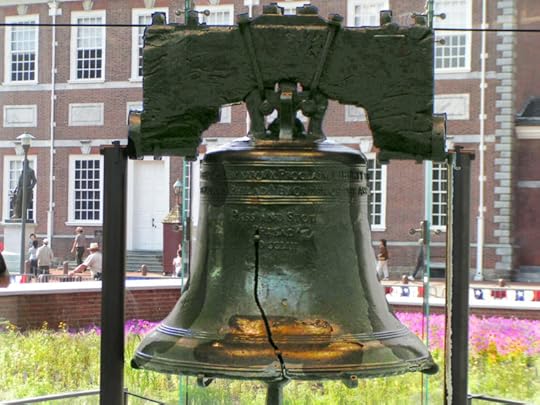 The Liberty Bell, Philadelphia by Bev Sykes. CC BY 2.0 via Wikimedia Commons.
The Liberty Bell, Philadelphia by Bev Sykes. CC BY 2.0 via Wikimedia Commons.Philadelphia is a great place for a conference. I’d recommend visiting Philadelphia’s Magic Gardens, visiting the trendy Fishtown neighborhood, or just taking a walk and appreciating the beautiful colonial architecture.”
– Joy Mizan, Assistant Marketing Manager, Academic/Trade
* * * * *
“Captain Ahab. I have it on good authority that I should seek out the Reading Terminal Market!”
– Eleanor Collins, Associate Editor, Academic Editorial
* * * * *
“My favorite literary character would have to be Hermione Granger. While in Philly, I’m hoping to see the Liberty Bell, and find the best cheesesteak that the city has to offer.”
– Megan Duffy, Marketing Assistant, Academic/Trade
Featured image credit: “Philadelphia in the Civil War, 1861-1865” by Frank Hamilton. Public Domain via Flickr.
The post Awaiting the Modern Language Association (MLA) convention appeared first on OUPblog.

The role of family values in the 2016 presidential election
I have recently returned from the national meeting of the American Academy of Religion where much was made of the effectiveness of Trump’s slogan, “Make America Great Again,” and, in particular, its skillful invocation of an imagined 1950s America – a time when many Americans believe that white (Christian) men modeled effective leadership qualities to build an “exceptional” nation founded in the Christian doctrine of “A City on a Hill” and informed by constitutional principles of Justice and Liberty. This narrative, of course, ignores the ways in which America has always failed to fully extend its most cherished values to all its citizens and, indeed, is premised on exclusion. Religious studies scholars, along with many other pundits, fail to fully analyze the sexism inherent not only in the slogan itself, but in the mythical past it invokes. This is a surprising oversight, since “family values”—which used similar nostalgia to oppose abortion, working mothers, and LGBTQ rights—first made its way into politics as a rebuke of Bill Clinton at the 1992 Republican National Convention. Although we no longer talk of “values voters,” it seems that the frameworks upon which the Republicans argued against the first Clinton run for the oval office came to fruition 25 years later.
Since the late 1970s, ‘Focus on the Family’ has been working to counter multiculturalism, feminism, and gay rights to show that this nostalgic vision of America is the singular American story, just as the Bible, when properly read, is the singular moral authority. The America that James Dobson, the founder of Focus, and Trump want to return to looks remarkably like the one we see on television reruns of “Leave it to Beaver” where the kids obeyed the parents, dad was in charge, and an apron-clad mom doted on the family. This version of the American family came to life in its own time of tension when the Cold War, the rise of youth culture, and desegregation loomed. The Cleavers, on this sitcom, were portrayed as normative, as representing every family. Their whiteness and their middle-class status were never addressed or questioned, their Christianity was assumed, and their family structure was normalized. The Cleavers and their neighbors faced no competition from a Europe recently ravaged by war or from immigrants to the U.S. whose entry had been all but barred since 1924.
In co-opting and nurturing this nostalgic vision of America, Focus, too, offers an interpretation of Christianity that universalizes and sacralizes a white, middle-class, American ideal. While scholars have spent much time dissecting the roles of Whiteness, and to some extent Christianity, in this election, the effects of a women out of place, of Hillary Clinton wearing the pantsuit in the family, has been ignored. The notion of Clinton as a woman out of place, according to a broad, White Christian worldview, helps to explain why 81% of evangelicals chose the non-religious, perhaps atheist, Trump over the proudly Methodist Clinton.
Earlier generations of conservative Christians focused on the primacy of Adam in their reading of biblical creation. With the guidance of Focus, however, contemporary Christians read Genesis to say that both men and women are blessed by God, created in his image, and worthy of God’s love and human respect, yet each has distinct roles in society: female submission and male headship are the correct biblical relationship. By the time of its creation in 1977, Focus instructed its members that by living within this biblical framework, they were fighting against a secular society in which the roles of men and women, husbands and wives, were blurred, creating family instability.
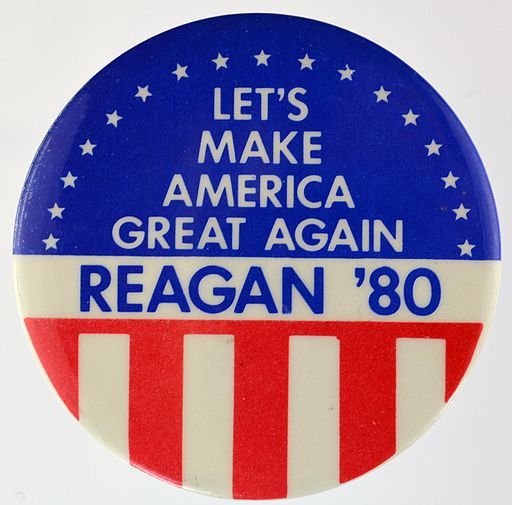 A button from Ronald Reagan’s 1980 U.S. presidential campaign. It bears the slogan “Let’s Make America Great Again” and also reads “Reagan ’80” by Ronald Reagan presidential campaign, 1980. Public Domain via Wikimedia Commons.
A button from Ronald Reagan’s 1980 U.S. presidential campaign. It bears the slogan “Let’s Make America Great Again” and also reads “Reagan ’80” by Ronald Reagan presidential campaign, 1980. Public Domain via Wikimedia Commons.Originally designed to answer letters and dispense information, Focus on the Family, which Dobson ran until 2009, became one of the most popular evangelical brands and multimedia ministries in the country with a radio program, multiple video series, and a publishing arm that has produced hundreds of books. Millions of Americans relied on this guidance to create a Christian family in the contemporary world and to learn what issues were worth fighting for. Through these various media, Dobson created a template that used frequently cited Bible verses like Ephesians 5:22, 6:1-2 to teach that men and women truly committed to God when they committed to their family. Only as fathers and mentors could men deepen their understanding of the Lord by being his guiding representative on earth. Simultaneously, through the nurturing and sacrificing required of being a wife and mother, women intensified their connection with Jesus. Working together to nurture children into their own divinely-defined heterosexual roles, Focus users were told, would unite the family in ways that secular parenting was failing to do.
While throughout the 1990s and early 2000s the national media spread the meaning of “family values” as a catchall for pro-life, anti-gay rights, and anti-pornography, explicitly and implicitly informing this definition was Dobson’s foundational teachings about the family as God’s original institution for a biblically-centered moral society. While commentators have noted the loss of power by the Christian right in recent elections, many former and current Focus users engaged in micropolitics by following Dobson’s teachings to provide a living witness to how aligning one’s self with this biblical message safeguarded both family and society against temptation. Dobson stated as fact that men naturally want to “provide and protect” and women naturally have “maternal inclinations” to “desire a stable home and a steady source of income.” This income, however, could not come from a wife herself, because that would deny her husband his primacy as the breadwinner—a role through which he “discovers a sense of pride—yes, masculine pride—because he is needed by his wife and children.”
Without his wife’s submission, according to Focus, men are likely to drift into affairs (a la Bill Clinton) and divorce (a la Trump). Each of these turns to temptation results, in the end, from wives’ embracing their own desires for self-fulfillment and in so doing, refusing to fulfill their divine roles as mother, nurturer, and supporter. Time and again, Focus materials emphasized that mixing male-female roles, such as having the mother as breadwinner or the wife as say Secretary of State, destroyed the American family (though in reality the shift of middle-class white women to the workplace was a return to an earlier norm). When women fail to submit to God and to their husbands, their children do not receive the guidance they need, and so starts the breakdown of society.
By 2016, male and female voters who had been reared on or were in some way involved with organizations like Focus had learned that when the mother occupied the proper role in the family, the family was solid; when she shifted her position, the family crumbled. The divorce and crime rates demonstrated the truth of their long held Focus teachings: when the mother works, more than the children suffer. As the family goes, so goes the nation.
Current discussions of why women voted for Trump in the wake of his comments about sexual assault have skirted a central rationale: Rather than risk being abandoned by the men who were meant to protect them, either at home or on the national stage, these women who voted for Trump voted for the Godly familial structure—with the father as the head of the home—instead of a woman whose usurping of male authority threatened the stability of the nation, just as it had her own home. “Family values” had finally won the day.
Headline image credit: ‘ Make America Great Again’ hat, by Gage Skidmore. CC BY-SA 2.0 via Flickr.
The post The role of family values in the 2016 presidential election appeared first on OUPblog.

January 3, 2017
Artificial turf and cancer risk
Amy Griffin, associate head coach of women’s soccer at the University of Washington in Seattle, first began to wonder about artificial turf and cancer in 2009. “We had two goalies from the neighborhood, and they had grown up and gone to college,” Griffin said. “And then they both came down with lymphoma.
“And we were all sitting there chatting—both of them were bald—and they were like, ‘Why us?’ We were just brainstorming and someone said, ‘I wonder if it has something to do with the black dots.’”
The “black dots” are familiar to anyone who plays sports on artificial turf. Black dots are the crumb rubber used in today’s artificial turf fields (and on playgrounds). Those fields are designed to be more pliable than AstroTurf because they’re made from longer synthetic grass surrounded by infill made of ground rubber from used tires, usually mixed with sand.
Today’s fields typically contain the equivalent of at least 20,000 ground-up tires. Such fields were introduced in the 1990s to make playing fields safer (gone were the AstroTurf rug burns) and safely dispose of used car tires, which can pollute the water, air, and soil as they decompose—or catch fire—in landfills.
The UW campus is near Seattle Children’s Hospital. In three of the first four times Griffin visited, she encountered goalies with cancer.
“And so I started Googling,” she said: “‘What’s in a turf field?’”
“And there was a lot of online discussion about this. What are those little black dots? Well it’s ground-up tires. It’s tire trash, from the dump. And it contains carcinogens,” Griffin said.
The black dots contain mercury, benzene, and arsenic. Griffin discovered that although scientists don’t know that crumb rubber turf causes cancer, they also don’t know that it’s safe.
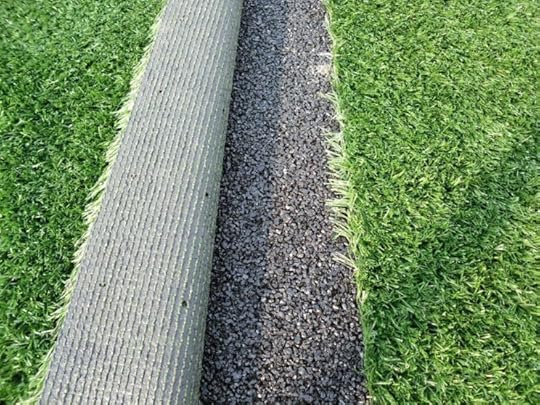 Rubber Shockpad under artificial grass by Soft Surfaces Ltd. CC BY 2.0 via Flickr.
Rubber Shockpad under artificial grass by Soft Surfaces Ltd. CC BY 2.0 via Flickr.“I’ve been at the University of Washington for 21 years,” Griffin said. “And for 15 years I saw nothing. I knew no one with lymphoma. But now, personally, I know six people who’ve had cancer.” By 2010 she had heard of 12 soccer players with cancer and decided to keep a list. She now has a list of 230 soccer players, nearly all goalkeepers, who have played on artificial turf and developed cancers. “Why is this?” she said. “I thought it might be like asbestos, where it took 35 years for people to see the danger.”
A 2014 study of nine synthetic turf fields in Italy indicated that evaporating materials at high temperatures may expose children in crucial growth stages to toxic chemicals. The release of polycyclic aromatic hydrocarbons (PAHs) occurs continuously, according to the report, and the “toxicity equivalent of the different compounds evaporating from the crumb was far from negligible.” The quantity of toxic substances synthetic turf releases, the report concluded, “does not make it safe for public health”.
In 2010, researchers from the Agency for Toxic Substances and Disease Registry in Atlanta evaluated the concentration of lead in synthetic turf by collecting samples of fields. They determined that the level of lead in turf fiber material and in field dust exceeded the limit for children’s consumer products and concluded that “synthetic turf can deteriorate to form dust containing lead at levels that may pose a risk to children”.
The most pertinent concern, echoed by many scientists and advocates, was that researchers didn’t know much about the safety of crumb rubber. In 2008 researchers from Robert Wood Johnson Medical School put it like this:
Neither systematic testing nor post-test evaluation has been performed on the composition and fate of either the turf or the filler. […] Is the crumb rubber contaminated with metals as it comes from ground up used tires that have been in contact with many roadways and dirt surfaces; what is the surface temperature of the artificial turf as the crumb rubber is black and will absorb more heat than a grass surface; how are the fields safely disposed of once they exceed their usable lifetime; and what happens to the rubber material that does not stay attached to the turf as it becomes mobilized and is released into the environment or becomes attached to the skin and clothing of the users? Numerous mothers have told us that this crumb rubber comes home with the child and is distributed around the house. Furthermore, there are now residential uses of turf with and without “in fill” marketed in many colors with unspecified coloring agents. Is the rubber and turf safe?
But the fact that crumb rubber contains carcinogens doesn’t necessarily mean that it’s dangerous to people or leads to cancer.
Archie Bleyer, MD, clinical research professor at the Knight Cancer Institute of the Oregon Health & Science University, spent ten years with other researchers investigating the causes of childhood cancers. “We spent tens of millions, maybe hundreds of millions, and we could find no external cause for cancer in children.”
Much of the debate about the danger of synthetic turf concerns the bioaccessibility of the contaminants in crumb rubber infill—whether the contaminant is likely to be absorbed into the body. A 2013 study in Risk Analysis indicated that PAHs in artificial turf were generally below the limit of detection. The study characterized the exposure as generally “de minimus”.
A 2013 review of evidence indicated that the total risk of absorption through oral exposure, skin absorption, or inhalation for athletes was insignificant, concluding that “elevated health risk from inhalation exposure could occur only for workers installing artificial turf in small and poorly ventilated facilitates with a long exposure history”.
“Lots of environmental factors are important to developing cancer later in life,” Bleyer said, “but childhood cancers? Cancer in adolescents is almost always due to spontaneous mutation.”
Researchers in California, Oregon, and Washington are looking into the relationship between synthetic turf and cancer. So far, according to Bleyer, a trend doesn’t appear to be evident. Indeed, peer-reviewed research over the years has not yet shown evidence of a connection between crumb rubber turf and any childhood cancers.
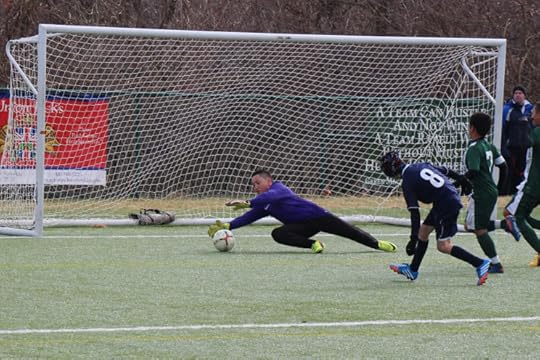 IMG_5821.PoU11.tot.tour.g2 by MSC U15 Green. CC BY 2.0 via Flickr.
IMG_5821.PoU11.tot.tour.g2 by MSC U15 Green. CC BY 2.0 via Flickr.Griffin’s concern is that the way scientists have been testing the safety of artificial turf may not reflect the way some soccer players interact with the material. She has seen blood cancers mostly in soccer players who were goalkeepers. They dive into the turf, often breathing only inches away from it, and end up ingesting much more of the substance orally than the average player. That’s not the sort of interaction researchers tend to investigate.
Despite widespread adoption of the crumb rubber–filled synthetic turf, no epidemiological studies have examined populations with experience playing on such fields. Nor have researchers conducted animal testing on rubber fill, in which mammals are directly exposed to the substance for long periods and researchers examine the effects.
Andrew Watterson, PhD, professor of health and director of the Centre for Public Health and Population Health Research at Scotland’s University of Stirling, has found cancer-causing chemicals in crumb samples from artificial soccer fields. He argues that the problem is just that so little is known about such a potentially dangerous substance.
“The surprising thing to me is that the health issues were not checked out much earlier—bearing in mind how long such pitches have been around and how many millions of people, especially children, use the surfaces worldwide—and we still don’t know what, if any, health risks there are from widely recognized carcinogenic substances used in crumb rubber and what uptake rather than simply exposure there is,” Watterson said. “It would have been in both government and industry interests to have sorted this [out] a long time ago.”
Tania Bush Isaksen, PhD, MPH, lecturer in the department of environmental and occupational health sciences at UW’s School of Public Health, is investigating cancer rates among athletes across Washington State. What she’s working on won’t tell whether artificial turf causes cancer, but “it’ll [tell] us if these rates are higher than we should expect.”
The Environmental Protection Agency, the Consumer Product Safety Commission, and the Centers for Disease Control and Prevention also are studying the issue. However, some sports facilities aren’t waiting. At least 30 clubs in the Netherlands have stopped the public from using fields made with artificial turf because of fears that the rubber could be dangerous to health.
But that choice carries risk, too. As Bleyer put it, “I don’t want us to eliminate this stuff.” Artificial turf helps allow children to exercise year-round. “I think there is a very good chance that a lack of exercise over the course of their lives would cause far more cancer than crumb rubber ever could.”
And Griffin, despite her serious concern about artificial turf—and despite being arguably the major figure to voice that concern—agrees. “The biggest problem would be if kids stopped playing and exercising over fear of cancer,” she said. Her own kids play on synthetic turf. She has them shower right after practice and immediately put their clothes in the laundry.
“A lot of this is just basic hygiene,” Isaksen said. “Take off your cleats and your shin guards and your socks outside; those things just don’t go in the house. And then go take a shower.”
A version of this article originally appeared in the Journal of the Nation Cancer Institute.
Featured image credit: Soccer goalie by rdelarosa0. CC0 public domain via Pixabay.
The post Artificial turf and cancer risk appeared first on OUPblog.

January 2, 2017
New Year’s resolution: compassion in the face of fear
Over the course of the last year, we have witnessed expressions of anger, fear, pitilessness and even hatred both predictably and unexpectedly. The British vote to leave the EU and US voters’ preference for a Trump presidency were prompted in part by feelings of anger towards leaders or ‘the system’ and fear about immigration and identity. The world has watched the war in Syria as thousands die and millions are misplaced with both horror and helplessness. What are our leaders and we to do?
At the core of all this, it seems to me, is a lack of compassionate leadership. Compassionate leadership means paying attention to those we lead, understanding the challenges they face (their frustrations, hurts, disappointments, as well as delights and successes), and empathising with them, feeling their feelings. Empathy provides the motivation for actively helping them and ensuring they flourish rather than languish.
The year was also a year where disconnection was seen as a solution. The United Kingdom leaving the EU and the Unites States putting up fences appealed to millions of voters. Leaders across Europe reacted to the plight of migrants from Syria and other war zones by erecting barriers. And the Trump transition team sought leaders who denied the scientific evidence on climate change.
Yet our reality is our interconnectedness and this has become clearer over the course of the past century than ever before. We are dependent on each other; on other species; on our planet; and our actions affect others, other species, and our planet. We face challenges on a huge scale (many of our making) including the need to reduce and reverse the effects of climate change; to change our species’ role in wiping out most other large mammals and thousands of other species; to prepare for and respond to the emergence of viruses that could lead to global pandemics; to support and integrate people forced to migrate because of war, famine, or rising sea levels; to foresee and ameliorate the effects of natural disasters; and to contain the potential threats posed by the commercial development of artificial superintelligence. Financial crises spread across the world, employment laws in one country affect workers in others, and industrial pollution affects the lives of all of us.
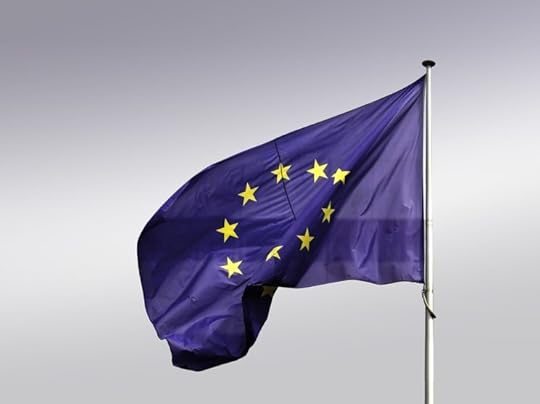 Flag by WerbeFabrik. CC0 public domain via Pixabay.
Flag by WerbeFabrik. CC0 public domain via Pixabay.That implies a need for compassion from all towards all, including other species. Our every interaction every day shapes our world. To the extent that we are present with and pay attention to all those we interact with (‘listen to them with fascination’), understand their challenges, empathise with them, and take action to help them, we create a more compassionate world. We don’t have to feel helpless in the face of the fear, anger, and hatred that we see on our screens each day.
And when we behave constructively and compassionately recognising our connection with others, there is a ripple of beneficial action. Similarly, destructive or damaging behaviour affects not merely one interaction but begins a ripple of destruction. There is a powerful existential imperative that we act with compassion towards all we are connected with, if we are to ensure healthy evolution of the ecosystems and communities we are part of.
Our growing awareness of our interdependence and interconnectedness with each other, with other species and our fragile ecosystems, as well as the planet as a whole, demands we learn how to work collaboratively. In our interactions with our fellow human beings, fellow workers in organizations, those we lead and those we provide services for (e.g., in health care, telecommunications, transport, retail, counselling) the role of compassion is fundamental to sustaining interconnection. And there is much evidence of the beneficial effects of empathy, forgiveness, and caring upon wellbeing and resilience. Neglect, incivility, bullying, and harassment have quite opposite effects.
At the core of all this, it seems to me, is a lack of compassionate leadership.
To have the capacity and resilience to show compassion to others, we must first practise self-compassion: paying attention to ourselves by identifying the challenges, pain, and suffering we face in our lives; understanding the causes of our distress; empathising or caring for ourselves; and then taking intelligent action to help ourselves, in order to be who we can be; staying close to the core values that give our lives meaning; and enabling a deeper connection with all we interact with.
It also requires an understanding of what makes the most difference to our wellbeing. Most important is spending quality time with those we love, simple exercise (walking makes a big difference to health and well-being), paying attention to the here and now, spending time in nature or our gardens; learning new skills, and finding opportunities to help others.
Our unique, mysterious lives offer the opportunity to transcend hate, ugliness, and dishonesty that many leaders are modelling and instead to discover truth, beauty, and love through compassion and interconnection. A starting point in this process for all is awareness. That means compassionately learning to be aware in the present moment of ourselves, of others, of our existence and of the mysterious privilege of being. And fostering compassionate leadership and compassionate interactions with all.
Featured image credit: Fear by Katie Chase. CC0 public domain via Unsplash.
The post New Year’s resolution: compassion in the face of fear appeared first on OUPblog.

Reading War and Peace
Maybe you’ve read War and Peace; maybe you haven’t. Maybe you got part of the way through its 1,392 pages and lost the will to continue. (It happens to the best of us!) If you’re in one of the latter two camps, Brian E. Denton is here to change your mind. A freelance writer based in Queens, New York, Brian has read War and Peace seven times already and has no plans to stop there. I talked to Brian to find out what makes War and Peace so special, and why you might want to join him in making reading the book a New Year’s Resolution for this year.
What’s this project you’ve been working on, and how long have you been doing it?
My project is a year-long, chapter by chapter, daily devotional reading of and meditation on Tolstoy’s War and Peace. I read the novel for the first time seven years ago. I loved it. I wanted to read it again. The only problem was, and I’m sure my fellow bibliophiles can relate, I also wanted to read other books. I’m just promiscuous like that. So the question presented itself: how was I to keep reading War and Peace, a notoriously long novel, and still keep up with my other reading interests? While looking at Constance Garnett’s Modern Library edition I noted that the book is divided into fifteen parts and two epilogues (yeah, you read that right). Each part, in turn, is divided into chapters. Small chapters. I counted those small chapters and there turned out to be 361 of them. And that’s when I decided that I’d spend each year of the rest of my life cycling through War and Peace at the rate of one chapter per day. That’s exactly what I’ve been doing for the past six years. It’s a curious, fun, and reflective way to read the book. It also makes it much easier. The longest chapter is only eleven pages and the average chapter length is just shy of four pages. I know this because last year I started a spreadsheet to compare the different translations. Anyway, this year I decided that I want to share this method of reading the novel with other people. To that end I’ll be publishing the devotional, complete with a synopsis and daily meditation based on each chapter starting 1 January 2017, on Medium.
Do you have a favorite chapter?
My favorite chapter occurs on Day 135 of the yearly cycle. Here we find Natasha and Nikolai visiting their uncle’s home after a busy day of hunting in the woods. There is a lot going on in their lives. Nikolai is on leave from a nasty war. Natasha is engaged to Prince Andrei but at the price of having to spend one year separated from him as a condition laid upon the engagement by his father. All this while their family is on the brink of financial collapse. The night concludes with a trap ride home through the dark. As the trap sloshes along the wet earth road and as the horses splash through the mud below the two siblings drop into a deep contemplative quiet under the canopy of the moon shadowed trees above. It’s a moment we’ve all experienced: a seemingly insignificant, quotidian moment small to the world but expansive to the individual. Natasha’s soft whistling of Russian folksong is the perfect punctuation to the scene as the two share a private and intimate moment while all about them history is on the move and nations are at war.
 Image credit: “Natasha from War and Peace,” postcard by Elizaveta Bem. Public domain via Wikimedia Commons.
Image credit: “Natasha from War and Peace,” postcard by Elizaveta Bem. Public domain via Wikimedia Commons.Who’s your favorite character in War and Peace?
During my initial reading it was definitely Prince Andrei. I admired his hard-nosed pragmatism and intelligence. Then it was Natasha for her warmth and passion. But then during one cycle I changed my mind and decided for sure my favorite character was actually Natasha’s brother, Nikolai. I even thought my favorite character was Marya at one point. This indecisiveness and proclivity to awkwardly flit about probably means my favorite character is actually Pierre though. Probably.
What inspired you to start reading War and Peace?
My brother Kevin. He bought me an old hardcover edition for Christmas one year. It has a fantastic bookplate in it featuring a black and white photograph of a farm with the words “Our Book” written on it. It’s one of my favorite books.
What else do you read while you’re reading War and Peace? Have you read any of Tolstoy’s other works?
When I was in high school I thought I was an anarchist. It turns out I was just an idiot. But at least I read lots of Tolstoy’s nonfiction on pacifism, Christianity, and anarchism. I’ve also read Anna Karenina and his short stories. My favorite is The Kruetzer Sonata. In addition to Tolstoy I read mostly the classics, the Great Books. I also enjoy the Stoics and history. There are a few contemporary fiction authors I read like Margaret Atwood, Jennifer Egan, Tao Lin, Emily Holleman, Stephen King, and Elena Ferrante.
What have you learned from reading so many different translations of the same book? Do you notice many differences between the translations?
I’m not a literary scholar or theorist so I’m not equipped to answer this question with any credibility. I will say that some translations, like Garnett’s, are more anglicized. Some don’t include any of the French. My favorite versions includes the untranslated French. Stylistically this is important because it’s closer to how the Russian aristocracy spoke in those days. Aside from that I’ll note that there are some major differences in the organizational conventions between the different translations. For instance, the Oxford World’s Classics Maude translation divides the novel into Books, Parts, and Chapters. So too with the Dunnigan and Edmonds. The Garnett has only Parts and Chapters. All the translations I have contain the same number of chapters though, except for the Norton Critical Edition which appears to break up chapters only when there is a change of scene. I don’t understand why the organizational conventions differ between translations.
What will you do when you run out of translations to read?
Read them again.
Featured image credit: “Saint Petersburg” by dron19. CC0 Public Domain via Pixabay.
The post Reading War and Peace appeared first on OUPblog.

Preparing for AALS 2017
As a brand new year stretches out before us, promising just as much excitement and interest as the last, we look forward to the latest exciting Association of American Law Schools (AALS) annual meeting in 2017.
This year’s meeting will have the theme of “Why Law Matters” and will provide fresh and novel insights into today’s most important issues in law and legal education.
The 2017 AALS meeting will take place from the 3 – 7 January 2017 at the Hilton Hotel in Union Square, San Francisco. The AALS is a non-profit association of 179 American law schools that aims to uphold and advance excellence in legal education.
Conference highlights include:
Children and the Law – Don’t miss Jonathan Todres on 5 January, 1.30pm – 3.15pm, speaking on “Children As Decisionmakers: Legal, Social, and Scientific Perspective.” In advance of the panel, learn more about human rights and children’s literature.
Scholarship – “Scholarship and Activism: Writing to Protest and for Social Change” on 5 January, 1.30pm – 3.15pm. Keynote speakers include Jonathan H. Adler, author of Business and the Roberts Court, and Randy E. Barnett, author of The Structure of Libert.
AALS President’s Program – “Great Expectations: The Competencies, Skills and Attributes that Employers Seek in our Graduates” on 5 January, 1:30pm ‐ 4:30pm.
National Security Law – “New Voices in National Security Scholarship Works in Progress” on 5 January, 3:30 pm – 5:15 pm. Moderator: Rachel VanLandingham, author of U.S. Military Operations: Law, Policy, and Practice.
International Law – “Implementing the Trans-Pacific Partnership: Challenges and Opportunities on the Road Ahead” on 6 January, 8:30 am – 10:15 am. Moderator: Lan Cao, author of Culture in Law and Development: Nurturing Positive Change
Law and Interpretation, Co-Sponsored by Jurisprudence – “The Work of Professor William Eskridge on Constitutional and Statutory Interpretation” on 6 January, 3:15 pm – 4:30 pm. Speaker: Neil H. Cogan, Editor of The Complete Bill of Rights: The Drafts, Debates, Sources, and Origins, Second Edition.
You can find out more about these events and others in the conference program.
We recommend visiting the following sights and attractions while in San Francisco:
Browse contemporary and modern art works at the M.H. de Young Memorial Museum, Yuerba Buena Center for the Arts, and the San Francisco Museum of Modern Art.
Extending your trip beyond the conference? Spend a day hiking amongst the Redwood trees or spot some Ewoks at Muir Woods National Monument. If you prefer something more leisurely, visit the numerous wineries in Napa and Sonoma.
San Francisco is a great place for those who enjoy nature. Enjoy a run or stroll in some of the many parks including Land’s End, Golden Gate State Park, and Baker Beach.
Take a stroll around Civic Center Plaza and United Nations Plaza, built to commemorate the United Nations Conference on International Organization (UNCIO), which took place in San Francisco back in 1945. It most notably resulted in the drafting of the United Nations Charter, signed on 26 June 1945 and came into force in October 1945.
Visit Herbst Theatre, distinguished as the historic site of the United Nations Charter signing in 1945, it is now the primary venue for many of the Bay Area’s premier cultural organizations , including San Francisco Performances, Philharmonia Baroque Orchestra, New Century Chamber Orchestra and Chamber Music San Francisco.
Attendees can also visit Alcatraz Island by taking a ferry across San Francisco Bay. Alcatraz was the site of a notorious federal prison from 1933 to 1963, housing some of the most infamous mobsters and violent criminals of the day, including “Machine Gun” Kelly, Al Capone, and Whitey Bulger.
If you are attending this year’s AALS meeting, don’t forget to visit the Oxford University Press booth #9-11, where you can browse our array of books, and take advantage of the 20% conference discount. Stop by to enter our prize draw for a chance to win an iPad mini, pick up a free access password to our collection of online law resources, and browse our law journals. You can also follow us on Twitter or Facebook for updates from the meeting.
The team here at Oxford University Press wish you a very successful and enjoyable AALS 2017!
Featured image credit: “law-books” by 193584. CC0 Public Domain via Pixabay.
The post Preparing for AALS 2017 appeared first on OUPblog.

Oxford University Press's Blog
- Oxford University Press's profile
- 238 followers



